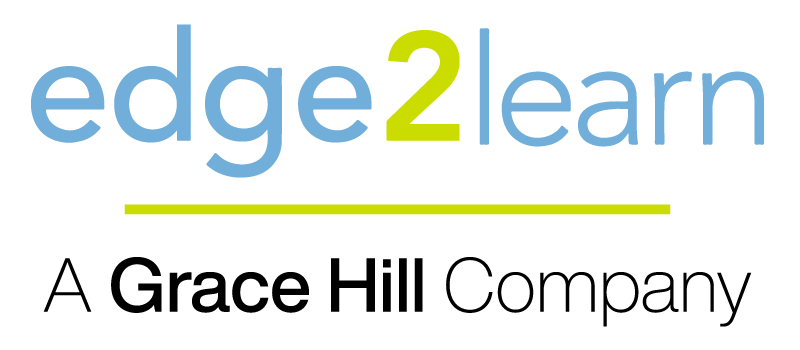As we move into 2021, we’re seeing a staggering number of job openings in the multifamily industry which creates a need for effective employee onboarding practices. The changes in policies and procedures brought about by the pandemic have created new needs and some new responsibilities to manage, which need to be considered as new people are brought onboard your team. How can you ensure new team members hit the ground running? By using our tips for effective employee onboarding.
First, let’s discuss the differences between onboarding and orientation.
Orientation
- General Focus: Employee’s role within the company
- Duration: One-time event
- Setting: Classroom or online
- Content: General company overview
- Outcome: Prepares the new employees to start working and take job-specific training
Onboarding
- General Focus: Employee’s specific role in his or her department
- Duration: Ongoing (could last for a few months)
- Setting: On-the-job
- Content: Specific to each new employee
- Outcome: Prepares the new employee to be productive in his or her role
There are 3 main goals for a new person or someone in a new position:
- Get up to speed with the job role.
- Contribute quickly to the overall team effort.
- Get them to feel connected.
Try these 7 tips for effective employee onboarding to help get yourself up to speed as a new employee.
- Get in Sync with Your Boss. Make sure you’re on the same page as your immediate supervisor. Ask for some dedicated one-on-one time to ensure you both have the same focus and goals.
- Reach Out to Stakeholders. Make a list of internal customers – the people within the organization who influence the work that comes your way and can affect the quality of your work. Once you’ve identified the stakeholders, ask for their contact information so you can reach out and have a brief conversation with each to understand their expectations.
- Get a Read on Company Culture. Observe the team to get an understanding of the company culture so you can work to fit the dynamic.
- Connect with Co-Workers. Invite the team to connect virtually for a cup of coffee or even lunch to get to know others on a deeper, more personal level.
- Understand How Your Team Communicates. Identify the platform your team uses primarily to communicate so you can remain informed as well as be heard.
- Set Clear Expectations If You are Managing a Team. Let your team know what you expect from them regarding communication, accountability, productivity, availability, and engagement.
- Pursue Online Learning Opportunities. Let your boss know you will be looking for additional ways to grow and develop and that you want to continue your learning.
When you’re helping to onboard a new employee who reports directly to you, you can similarly use these 7 tips for effective employee onboarding.
- Getting in Sync. Think of what you wish someone had told you and then pass that on to your employee. Give them the “inside track” to help them to be more successful.
- Stakeholders. Let the employee know who the stakeholders are. Give them a heads-up about who they can expect to hear from within the company and how to handle.
- Corporate Culture. Give your employee an idea of what the company culture is like and invite them to participate.
- Connection. Help the new employee connect with others; introduce them to the team and arrange and be present for a virtual meeting.
- Communication. Reach out to involve the new employee in communication. Consider a virtual team meeting.
- Expectations. Take the first step in starting a conversation about expectations and be thorough.
- Learning Opportunities. Create a dialogue to find out where the employee wants to go or what they want to learn next and help them to get there.
When you are the one onboarding, be sure to be assertive and advocate for yourself. When you are in charge of onboarding an employee, make it a priority to communicate clearly and thoroughly and help the new employee to feel welcome and connected! Using these tips for effective onboarding will help you and your new employees get off to a great start.
Click here to access additional COVID-19 Multifamily Training Resources
Read more like this from Edge2Learn

Contributed by:
Susan Weston
President, The Susan Weston Company
Susan Weston operates The Susan Weston Company, her consulting and training firm located in Dallas, Texas. She brings to her clients her 30-year career as Vice President of Operations, Director of Human Resources and Vice President of Learning and Development at both publicly traded and private companies. Her operational and strategic expertise brings value for both asset performance and talent development. She also served as Director of Education for the National Apartment Association and earned the prestigious ACE award for educational excellence from NAAEI in 2009. She continues as an NAAEI Faculty and Board Member and volunteers at local and state apartment associations. Over the last five years, she has presented scores of programs at associations and companies across the nation. Currently providing training and development support at Alpha-Barnes Real Estate Services. She is Adjunct Professor at the University of North Texas School of Business teaching both Residential Property Management and Advanced Residential Property Management courses.
Edge2Learn is an eLearning company whose focus is the Property Management Industry and specializes in property management training and multifamily education. With over 30 years of experience and a commitment to increase industry excellence, we are passionate about engaging learners to maximize benefits for both companies and employees. Aligned with a well-respected industry leader, Ellis, Partners in Management Solutions, the Edge2Learn platform provides a turnkey solution for clearly identified needs and opportunities. We prepare learners to deliver a superior customer experience and also reduce corporate liability risks and overall employee turnover.



